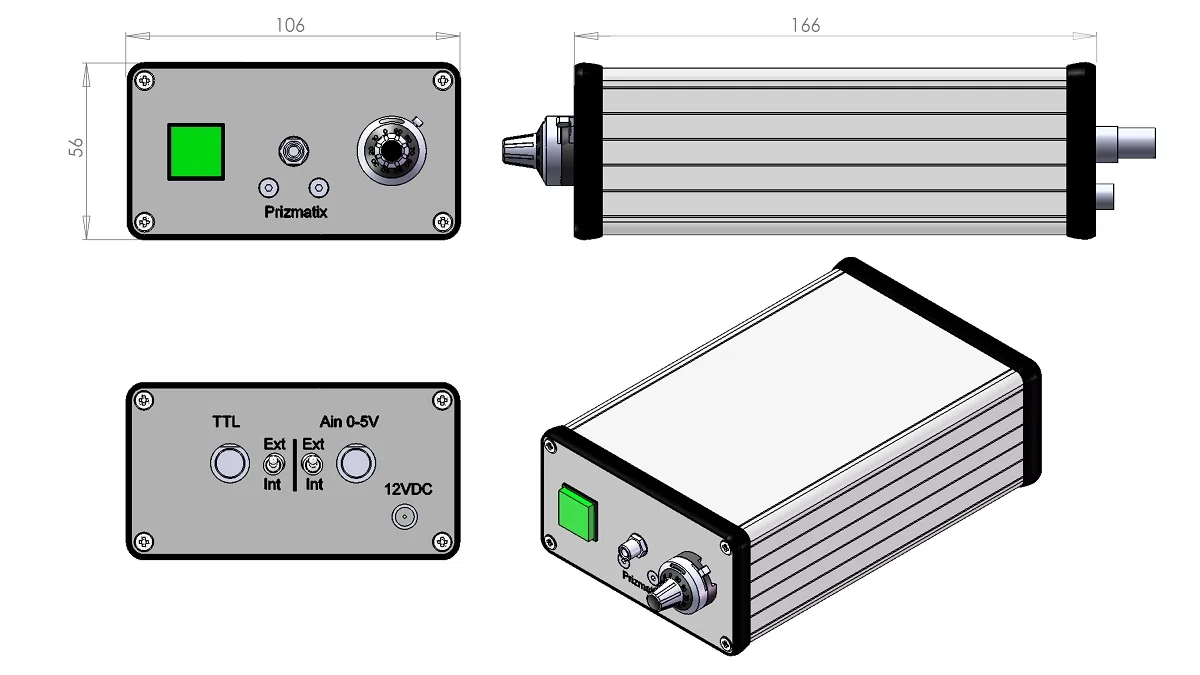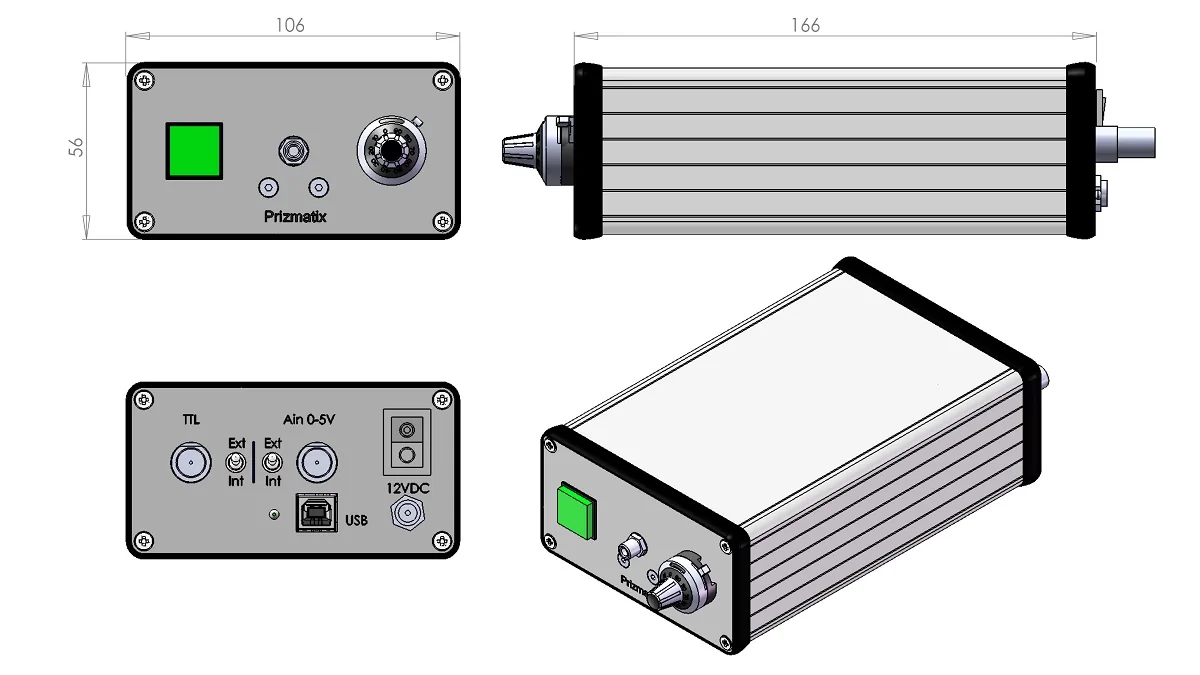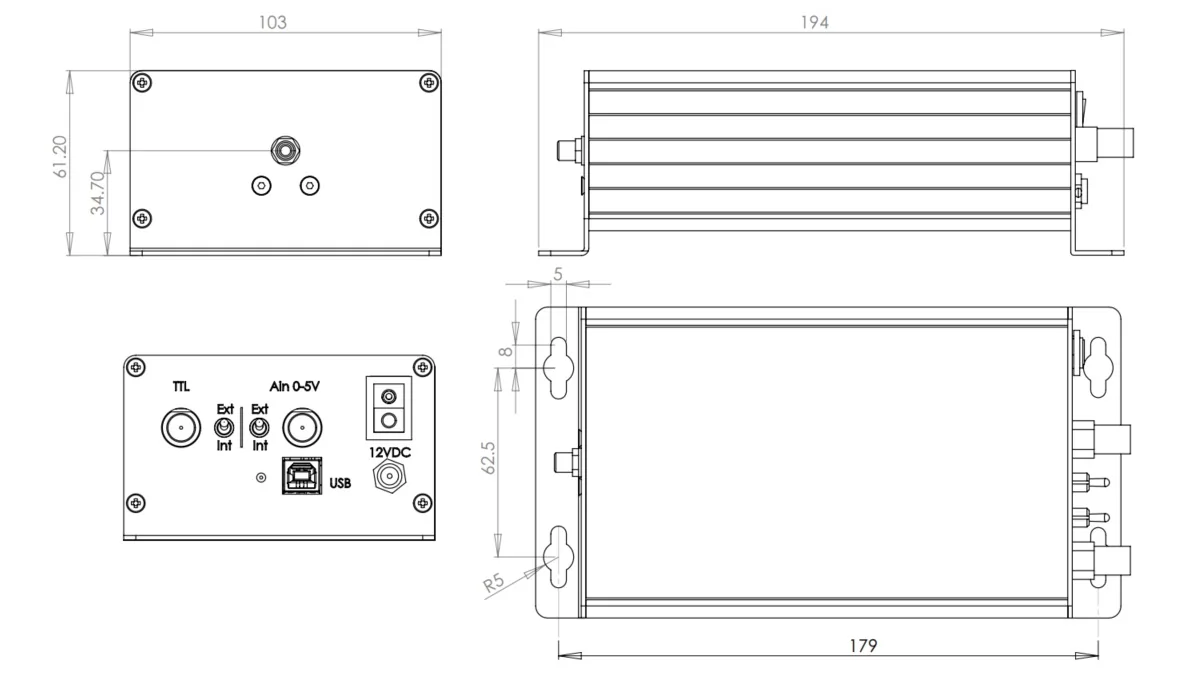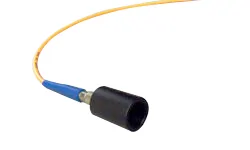Prizmatix Silver-LED fiber-coupled LEDs provide high power continuous (CW) low noise output as well as fast pulsed operation from optical fiber. Silver-LEDs are available at deep UV, UV, Violet, Blue, Green, Yellow, Red or NIR. Fiber Coupled LED light source modules are ideal for use with high NA optical fibers. These fiber-coupled LEDs are effective replacements of fiber-coupled lasers in many applications, such as spectroscopy, photochemistry, NMR as well as illumination and curing.
The TTL input enables external triggering. The Analog input (0-5Vdc) enables control of output power from computer equipped with digital to analog module (D/A).
Silver-LED is ideal for use with various fiber optic spectrometers in continuous, strobe or external triggering measurement mode.
The Silver-LEDs are available at standard wavelengths as in the table below.
Other wavelengths are available on request.
For multi-wavelength light source modules click here.
For modular multiwavelength, collimated and fiber coupled light sources click here.
Silver-LEDFeatures
- High output power (see table below)
- SMA fiber connection
- Precisely adjustable power by 10 turns potentiometer
- TTL external modulation input (up to 50KHz)
- Analogue input (0-5V) for power control
- TTL and Analogue input are optically isolated
- Low optical noise < 0.05% RMS
- Long life (no lamp replacement required)
- Applications: Spectroscopy, Optogenetics in-vitro, Photochemistry, Photobiology, NMR
|
Some Research Papers with Reference to Prizmatix's Fiber-Coupled LEDs
|
Electro-Optical Specifications
| Typical Optical RMS Noise (DC-1MHz) | % | <0.05 |
| TTL and Analog inputs | Optically isolated BNC connectors | |
| Digital modulation frequency (TTL) | Hz | DC-50000 |
| Rise / Fall time (10% - 90%) | μs | <2 |
| Analog input voltage range | V | 0-5 |
| Analog modulation frequency | Hz | DC-100 |
| Input Voltage | V | 12 |
General Specifications:
| Operation temperature range | 0C | 10-35 |
| Storage temperature range | 0C | -10-55 |
| Operative relative humidity (Non condensing) | % | <90 |
| FC2-LED Dimensions (W x H x D) without extrusions |
mm | 174 x 130 x 197 |
| FC3-LED Dimensions (W x H x D) without extrusions |
mm | 174 x 130 x 197 |
| FC5-LED Dimensions (W x H x D) without extrusions |
mm | 241 x 130 x 197 |
| Power Adaptor Dimensions (L x W x H) |
mm | 175 x 72 x 35 |
| Power Adaptor Weight | g | 190 |
| Power Adaptor Safety |
|
Silver-LED Fiber Coupled LED Mechanical Drawings

Silver-LED-USB Fiber Coupled LED Mechanical Drawings

Silver-LED-USB-OEM Fiber Coupled LED Mechanical Drawing

Optional Accessories
|
Fiber patch cords:Various fiber optic patch cords are available for use with the 3-LED or 5-LED products. Most popular patch cords are 1000 / 1500 / 2000 micron core diameter Polymer Optical Fibers (POF) terminated by optical SMA connectors on both sides. Prizmatix can provide Stainless Steel tube at one end of the patch cord instead of the SMA connector. This configuration is more convenient in some applications. See more details at: /dev/Custom-Fiber-Optic-Assemblies.htm |
|
|
Fiberoptic Collimator:Collimators are required to generate a parallel beam of light out of the naturally diverging light emission from an optical fiber. Prizmatix collimator is designed to collimate High NA fibers (up to 0.53), such as Hard Polymer Clad fibers and Polymer Optical Fibers (POFs).See more details at: |
 |
Fiber Bundles:To combine outputs of multiple LEDs a Y-shaped fiber bundle with two or more input branches can be used. Prizmatix can help to configure and build custom fiber bundles for specific applications.See moree details at: | |
Special Bundles:For spectroscopy application special fiber optic bundles are very important. Special care must be addressed to eliminate possible cross link between the excitation and the collection fibers. Seemore details at: | |

